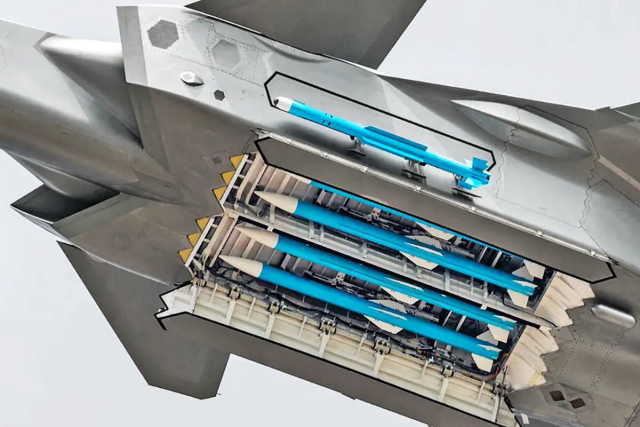The rapid pace of development of China's military aviation is well documented. Western observers are looking forward to new designs and variants of existing ones, and manufacturing plants maintain a seemingly inexorable pace of deliveries. At the same time, the domestic production of air-based weapons for arming these aircraft is covered in less detail. For years, China's progress in air-to-air missiles, or AAM [air-to-air missiles], has been ignored or achievements downplayed.
In many cases, Chinese air-to-air missiles have been discredited as simple forgeries of existing Western designs. However, recently, it has been increasingly recognized that Chinese AAM not only keep up with their competitors, but also in some cases offer characteristics that surpass them. Since the United States, in particular, is working to reduce the backlog of long-range Chinese AAM, now is the right time to review the air-to-air weapons equipped with combat aircraft of the People's Liberation Army of China (PLA).
Visitors to the IVi website are offered another article by the author Thomas Newdick, already familiar to us, published on the War Zone resource. The author's previous article.This review examines the history of the development of Chinese AAM, followed by the most important national air-to-air missiles currently in service with the PLA.
At the same time, it should be borne in mind that China has also received significant stocks of Russian-made AAM, primarily for arming its Sukhoi Flanker series fighters. These weapons include the R-27 (AA-10 Alamo), R-73 (AA-11 Archer) and R-77 (AA-12 Adder) missiles, although they are increasingly giving way to Chinese weapons, while both Russian and Chinese-made flankers are being optimized for their use.
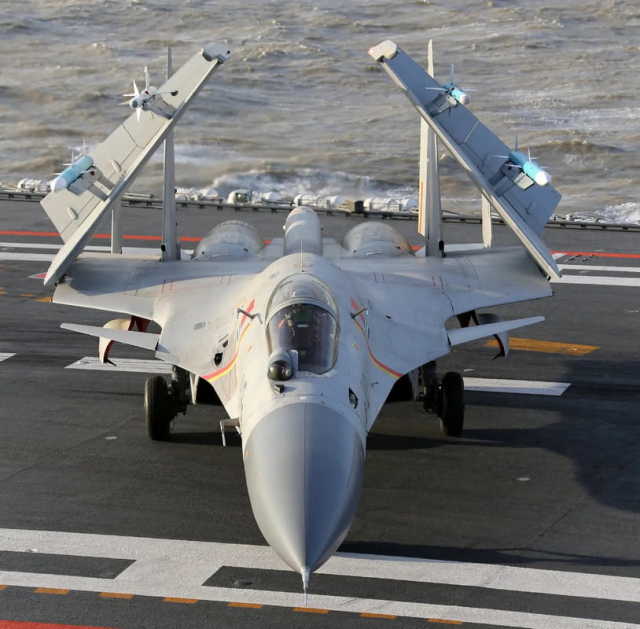
J-15 equipped with Chinese air-to-air missilesEarly development of air-to-air missiles
Before considering the AAM of national production, which can be found in service with PLA combat aircraft, and their export counterparts, today it is worth looking back at China's earlier developments in this area. After all, for many years, Chinese-made AAMS were probably the least studied weapon in this class, and there was even less information about them than about Soviet models.
The very first Chinese AAM was indeed a copy of Soviet weapons. The PL-1 model was based on the Soviet RS-1U (AA-1 Alkaline), which was a primitive guided-beam missile used on some of the first Soviet-made jet fighters. Initially, the missile was supplied to China by the Soviet Union before the Sino-Soviet split, but it does not seem to have found much use.
It is very likely that the discontent of the PLA RS-1U became apparent after clashes with Taiwanese F-86s in 1958, when the AIM-9B Sidewinder with infrared guidance was first used in combat. While China launched domestic production of the PL-1 in the late 1950s, apparently with Soviet help, attention soon shifted to weapons of the same class as the AIM-9B.
The PL-2 rocket did not become a direct copy of the Sidewinder, but it was based on the Soviet R-3C (AA-2 Atoll) rocket, which itself was largely inspired by the AIM-9B. Its development was facilitated by the wreckage of one of the Taiwanese missiles, which Beijing shared with Moscow.
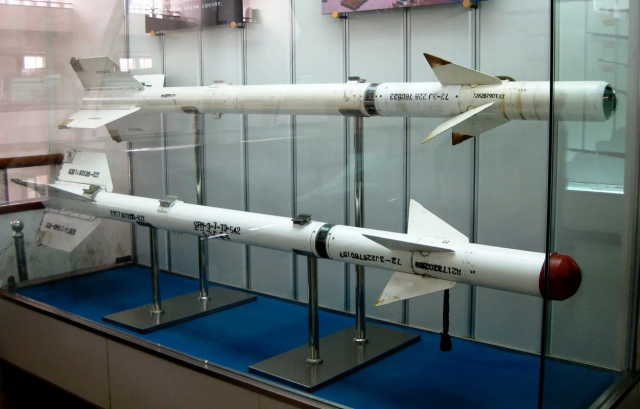
Chinese AAM with thermal guidance, apparently PL-2, exhibited at the Military Museum of the Chinese People's Revolution in Beijing.Like the AIM-9B, the P-3 and PL-2 were strictly limited first-generation air-to-air missiles with infrared guidance, suitable only for practical use in tail-chasing battles.
However, while the Soviets began to develop new AAM with thermal guidance, China adhered to the basic PL-2 design and tried to improve it. This led to the creation of the PL-5 model with an incredibly long development period, which, however, was not atypical for Chinese military projects during the Cultural Revolution.
Work on the PL-5 began in 1966, and it entered production only in 1982. Initially, the PL-5 was considered with a semi-active radar homing head (SARH), as the AIM-9C of the US Navy, but in its final form it was another infrared-guided weapon, designated as the PL-5B. In the mid-1980s it was replaced by the improved PL-5C and finally the PL-5E-II in the early 1990s. It is reported that this latest model has significantly advanced long-range guidance capabilities (sight angle +/-25 degrees before launch), which provides universal characteristics. It is also equipped with a laser contactless fuse.
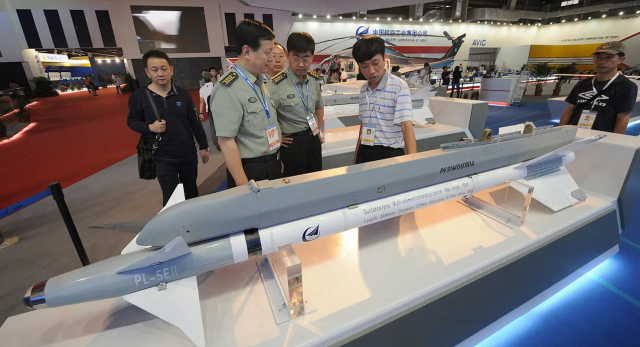
A mock-up of the PL-5E at the China Airshow in Zhuhai in 2008. Externally, the weapon is very similar to the AIM-9L/M SidewinderPL-8 Rocket
By the early 1980s, it became clear that the PL-5 had only limited development potential, which was surpassed by both Soviet and Western models. In response, China began work on a new PL-8 infrared-guided AAM. Since this rocket looks almost identical to the Israeli Python 3 from Rafael, it is often called a copy, but in fact everything is much more complicated. In fact, it seems that the PL-8 appeared during the period of Sino-Israeli cooperation in the 1980s. In particular, Beijing was impressed by the effectiveness of Python 3 over Lebanon in 1982 and requested technology transfer.

PLA Navy J-8B with PL-8 missiles over the China Sea, January 2001.Israel reportedly provided kits for licensed production of Python 3 in the late 1980s, before China began full-fledged domestic production under the PL-8A designation in the late 1990s.
It was followed by the PL-8B missile, first spotted in 2005 and equipped with a new multi-purpose homing head with a wider viewing angle out of sight, and its range increased to about 12 miles.
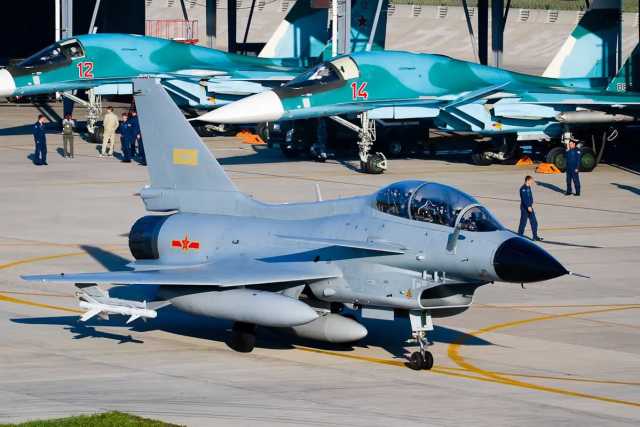
Two-seat J-10S with PL-8 missiles on suspended underwing pylons during exercises with the Russian Aerospace Forces.It is important to note that the latest PL-8B is also compatible with Chinese-made helmet sights.
Currently, these sights can be found on a wide variety of PLA fighters, including the J-10, the Flanker series and the J-20. They provide a truly dynamic long-range aiming capability to a pilot who is looking at a target for its capture by a missile.
PL-10
While the PL-8B is still widely used, the PLA's newest air combat missile, the PL-10, also known as the Advanced Short-Range missile PL-ASRM (Advanced Short-Range Missile), is generally a more advanced weapon, which in its class is estimated to be at least equivalent to the Western one.
The PL-10 includes an infrared GPS (IIR), an exhaust nozzle with a variable thrust vector, a laser proximity fuse and reportedly boasts a 90-degree aiming capability. In general, IR GPS offer a number of significant advantages, including improved target detection range and better resistance to countermeasures.
Statements have been made that the PL-10 has the ability to lock after launch (LOAL), which would allow it to hit targets at long ranges, while target data is transmitted via a data link during flight. This capability is also crucial for stealth aircraft that carry their weapons hidden in internal compartments.
However, the J-20 uses PL-10 launchers with guides that extend beyond the side weapon compartments, projecting missiles into the sliding jet, but with the compartment doors closed. This approach was apparently chosen as an alternative to LOAL, as well as as a faster method of launching weapons during shorter-range combat. It is very possible that later versions of the PL-10 will have LOAL capabilities, but they were not available when the J-20 was developed and first adopted.
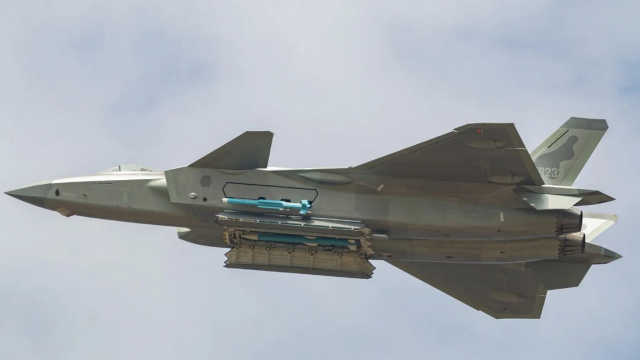
J-20 demonstrates its air-to-air missiles during an airshowThe rocket is also compatible with helmet sights from the very beginning, which allows firing from all angles at very high overloads.
Development of the PL-10 began around 2005 with the first test launch, which was reported at the end of 2008, but the rocket has also undergone significant modernization. Obvious examples of production began to appear on PLA J-11 Flanker fighters in 2011, although most reports suggest that it entered service after that date, possibly shortly before its public debut at the Zhuhai Air Show in 2016. Since then, it has gradually replaced the PL-8B as the PLA's standard short-range AAM.
The defense analytical center of the Royal United Services Institute of Great Britain (RUSI) believes that the PL-10 is "comparable to European ASRAAM and IRIS-T missiles, with superior kinematic characteristics of the American AIM-9X Sidewinder."
There are unconfirmed reports that China is currently working on a successor to the PL-10, sometimes known by the designation PL-16, but no details are available.
To be continued…
According to the materials of the resource thedrive.com/the-war-zoneThe materials of the article contain exclusively the author's estimates and do not reflect the position of the editorial board of IVi.
